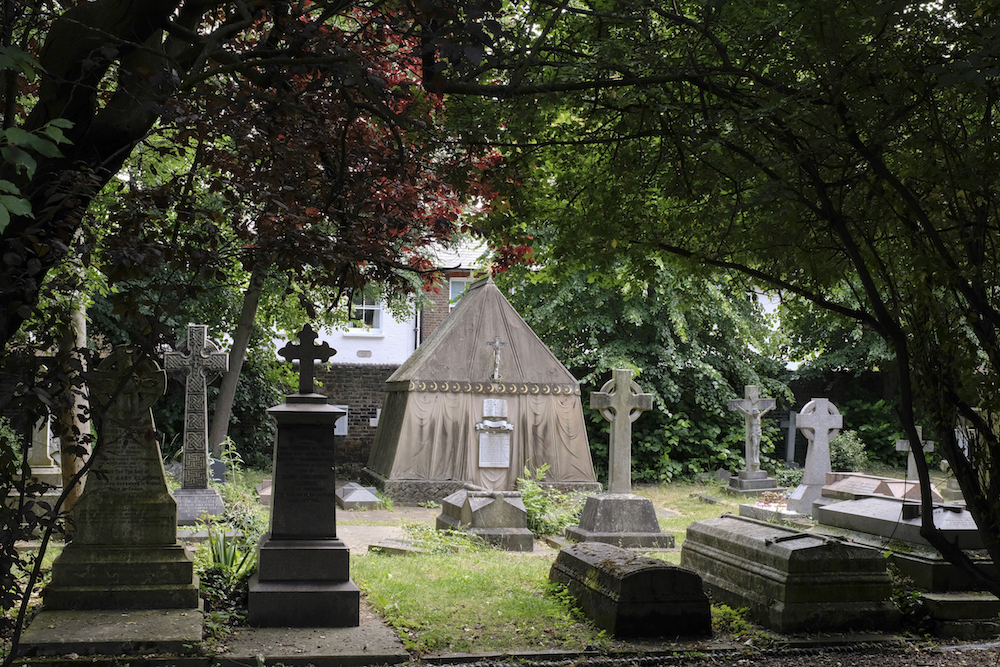
We had a packed agenda on this 3-day London trip, but as luck would have it, there was a two hour window of free time on Saturday morning.
It was just enough time to hop a Hammersmith & City Line train at Shepherd’s Bush Market, next to our hotel, and ride it to Hammersmith, where we picked up the bus to Mortlake.
I wanted to visit the grave of one of my travel heroes, the explorer Richard Francis Burton.
I had been there 10 years before. I’d flown over from Canada to coach a weekend fitness seminar, and I asked my good friend and host Vik Hothi to help me find this place. In hindsight, they must have thought it a bit odd that this was what I wanted to see on my first trip to London, but that didn’t occur to me at the time.
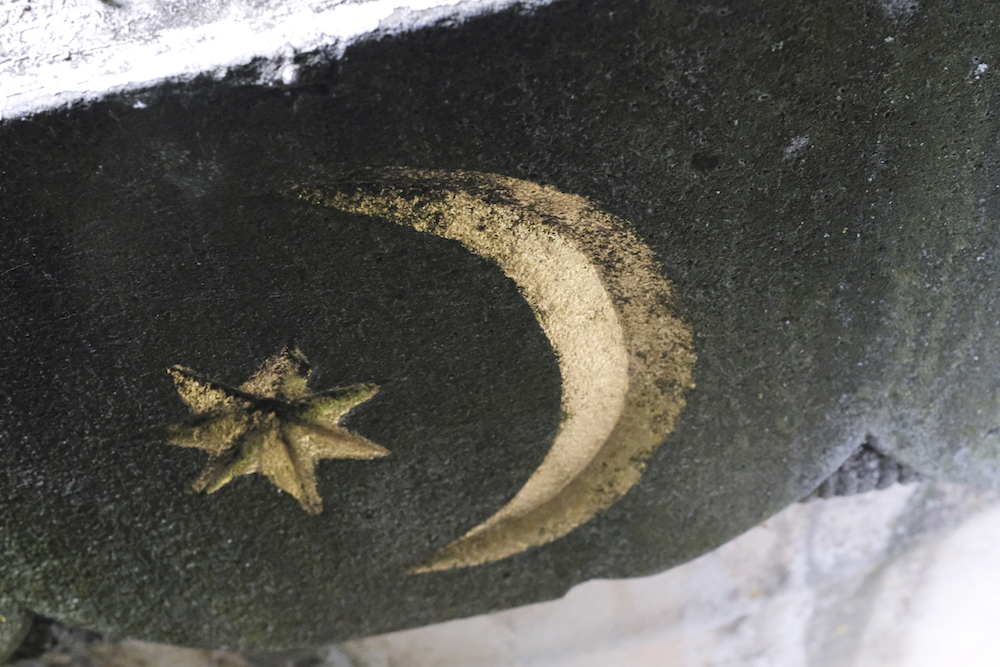
Captain Richard Francis Burton lived a life people today would hardly find believable. He was said to speak some 29 languages and dialects. He was the first European to enter the Ethiopian city of Harare, was co-discoverer of the source of the Nile, and was one of the few foreigners ever to make the pilgrimage to Mecca in disguise.
Burton was also a master of the sword. On one expedition he fought off an attack by Somali tribesman that saw him wounded through the mouth by a spear, the scars of which are visible in all of his later photographs.
Burton’s writings provide a fascinating glimpse into an age when we still hadn’t come to grips with the limits of our known world.
They contain a wealth of detailed observations about native peoples, plants, wildlife, minerals, ruins, and the etymology of place names, and yet are seldom dry. His sense of wonder at penetrating the unknown and the freedom of exploration are always present.
Burton was also a man ahead of his time. He translated the Kama Sutra when Victorian morals would rather have seen it repressed. He referred to native peoples as “intelligent and humane” when most regarded non-Europeans as “sub-human”. He approached the world on its terms rather than his own. For the serious traveler, all of his works are worth reading.
Tomoko had never been to his tomb, and I was eager to show it to her. I also wanted to get some proper photos, better than what I’d managed back in 2009.
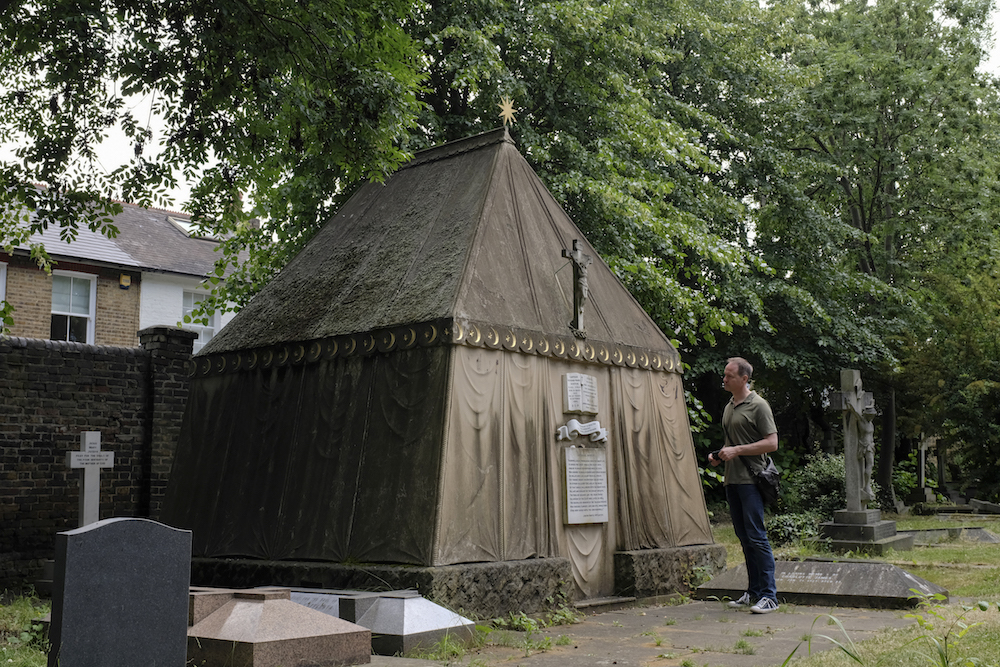
A christening was in progress when we arrived at the old St. Mary Magdalene Roman Catholic Church, or a wedding, or something involving large numbers of children, and people dressed in suits.
We slipped past this festive congregation and down the alley to the cemetery behind the old stone church. In the jumbled mass of mossy graves, Burton’s stood out, and not just because of its size.
It’s a large mausoleum cast in stone in the shape of a Bedouin tent. The folds and ripples suggest a calm day, without the desert’s gusting wind to snap the canvas taut. Above the entrance is a crucifix, but the tent is ringed with the symbols of star and crescent moon painted with gold, and these give a better sense of Burton’s interests and his wandering life.
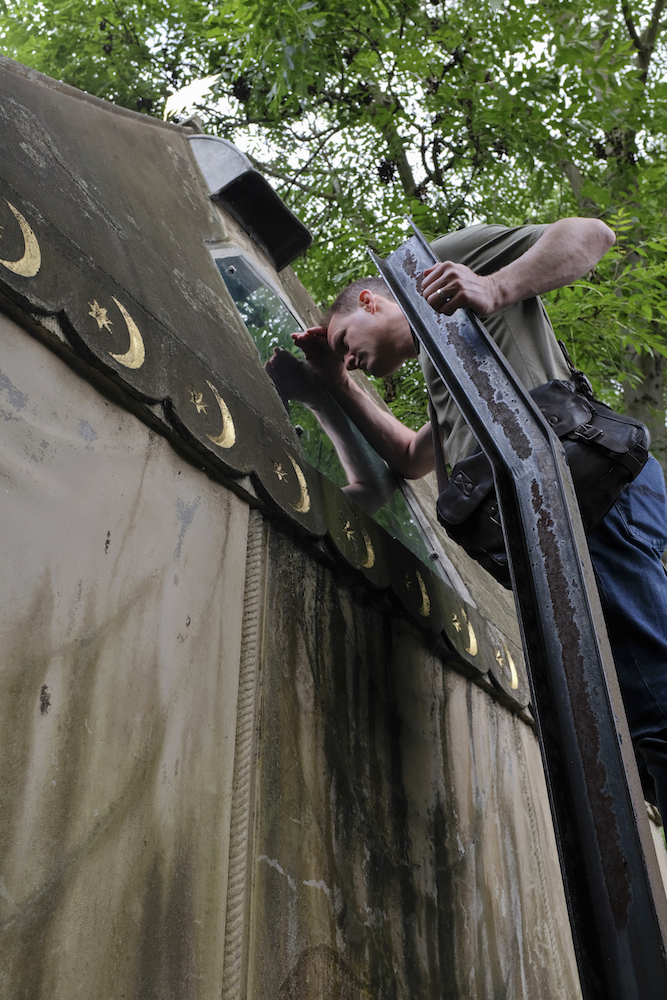
If you duck behind the mausoleum, between it and the cemetery wall, you will find a metal ladder leading to a window cut in the sloping roof of the tomb.
Take a little water and a cloth to wipe the glass in case it’s dusty, and press your face against it with your arms to cut the sun’s glare.
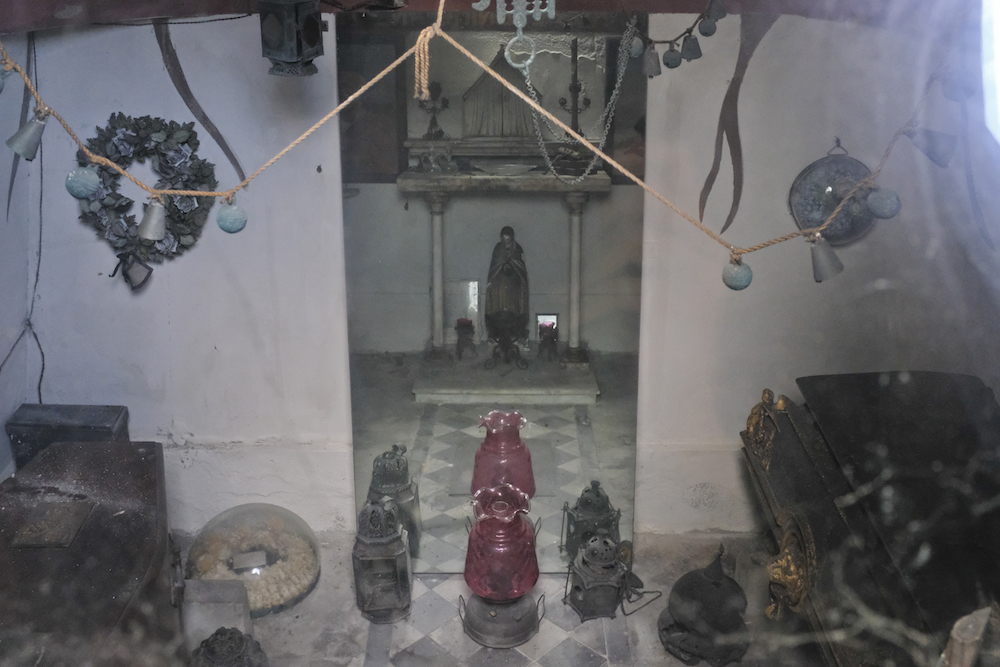
Isabel Burton’s mahogany casket is on the left. On the right, the explorer’s heavy metal casket rests on lion’s paws. There is a wreath on the wall, brittle and cracked, and what looks like an old ammunition box, and flowers, and on the floor next to the sealed entrance, a cluster of lanterns. Camel bells hang from the ceiling, and everything is covered in the dust of the grave.
There’s an altar, too. It’s right below you, but a mirror has been placed opposite the window so you can see the rest of the room. But Burton wasn’t a Catholic. That was his wife Isabel. He was an atheist. Her testimony of a deathbed conversion and repentance was surely false. No one who knew the man believed in it. She also burned his papers to protect what she saw as his reputation, and his legacy.
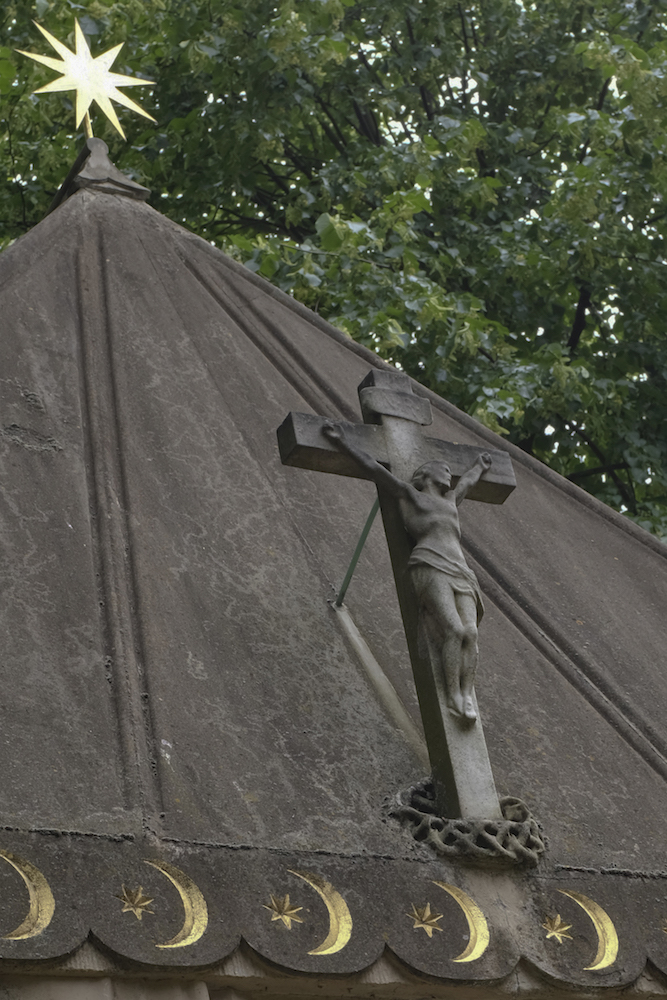
We were able to spend half an hour there, communing with the ghost of Burton, before it was time to catch the bus back to Shepherd’s Bush and our packed weekend event.
Hymns seeped out through the thick walls and stained glass of the church behind us, and planes to Heathrow passed overhead, engines idling, lowering their flaps for the landing run. I wonder if they knew they were passing over the grave of one of our greatest travelers?
Burton died in Trieste in 1890, and his wife’s body joined his in 1896, but his journeys live on. His books are still read today.

Photos © Tomoko Goto 2018

Get your FREE Guide to Creating Unique Travel Experiences today! And get out there and live your dreams...
